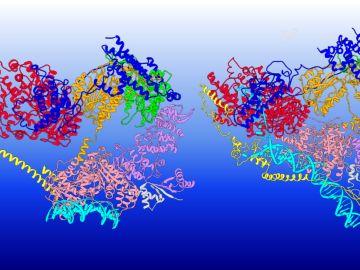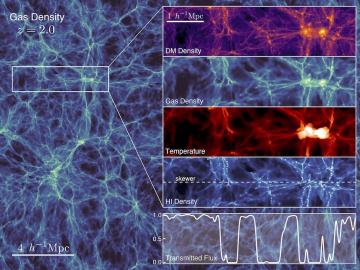
Filter News
Area of Research
- Advanced Manufacturing (2)
- Biological Systems (1)
- Biology and Environment (56)
- Building Technologies (1)
- Clean Energy (64)
- Computational Engineering (1)
- Computer Science (2)
- Electricity and Smart Grid (1)
- Energy Sciences (1)
- Fuel Cycle Science and Technology (1)
- Fusion and Fission (20)
- Fusion Energy (3)
- Isotope Development and Production (1)
- Isotopes (16)
- Materials (78)
- Materials Characterization (2)
- Materials Under Extremes (1)
- National Security (28)
- Neutron Science (33)
- Nuclear Science and Technology (2)
- Supercomputing (73)
Date
News Topics
- 3-D Printing/Advanced Manufacturing (33)
- Advanced Reactors (6)
- Artificial Intelligence (48)
- Big Data (20)
- Bioenergy (33)
- Biology (41)
- Biomedical (12)
- Biotechnology (11)
- Buildings (27)
- Chemical Sciences (38)
- Clean Water (9)
- Climate Change (52)
- Composites (10)
- Computer Science (44)
- Coronavirus (4)
- Critical Materials (10)
- Cybersecurity (9)
- Decarbonization (51)
- Education (4)
- Emergency (2)
- Energy Storage (30)
- Environment (63)
- Exascale Computing (21)
- Fossil Energy (5)
- Frontier (25)
- Fusion (15)
- Grid (23)
- High-Performance Computing (48)
- Hydropower (3)
- Irradiation (2)
- Isotopes (22)
- ITER (1)
- Machine Learning (24)
- Materials (73)
- Materials Science (31)
- Mathematics (6)
- Mercury (2)
- Microelectronics (3)
- Microscopy (9)
- Molten Salt (1)
- Nanotechnology (9)
- National Security (37)
- Net Zero (11)
- Neutron Science (42)
- Nuclear Energy (31)
- Partnerships (36)
- Physics (19)
- Polymers (9)
- Quantum Computing (23)
- Quantum Science (21)
- Renewable Energy (2)
- Security (5)
- Simulation (43)
- Software (1)
- Space Exploration (7)
- Statistics (2)
- Summit (13)
- Sustainable Energy (34)
- Transportation (30)
Media Contacts

As extreme weather devastates communities worldwide, scientists are using modeling and simulation to understand how climate change impacts the frequency and intensity of these events. Although long-term climate projections and models are important, they are less helpful for short-term prediction of extreme weather that may rapidly displace thousands of people or require emergency aid.

Transcription factor IIH is a veritable workhorse among the protein complexes that regulate human cell activity, playing critical roles both in synthesizing DNA and in enabling DNA repair. But how can one protein assembly participate in two such vastly different jobs? A team of researchers led by chemistry professor Ivaylo Ivanov of Georgia State University used the Summit supercomputer at ORNL to tackle that question.

Oak Ridge National Laboratory researchers developed a model framework that identifies ways to ensure wildlife can safely navigate their habitats while not unduly affecting infrastructure.

Growing up exploring the parklands of India where Rudyard Kipling drew inspiration for The Jungle Book left Saubhagya Rathore with a deep respect and curiosity about the natural world. He later turned that interest into a career in environmental science and engineering, and today he is working at ORNL to improve our understanding of watersheds for better climate prediction and resilience.

A research team from the University of California, Santa Cruz, have used the Oak Ridge Leadership Computing Facility’s Summit supercomputer to run one of the most complete cosmological models yet to probe the properties of dark matter.

JungHyun Bae is a nuclear scientist studying applications of particles that have some beneficial properties: They are everywhere, they are unlimited, they are safe.

Oak Ridge National Laboratory researchers have developed a method to simplify one step of radioisotope production — and it’s faster and safer.

Four firms doing business with the Department of Energy’s Oak Ridge National Laboratory received ORNL Small Business Awards during an awards ceremony on June 29.

With the world’s first exascale supercomputer now fully open for scientific business, researchers can thank the early users who helped get the machine up to speed.

Researchers at the Department of Energy’s Oak Ridge National Laboratory were the first to use neutron reflectometry to peer inside a working solid-state battery and monitor its electrochemistry.


